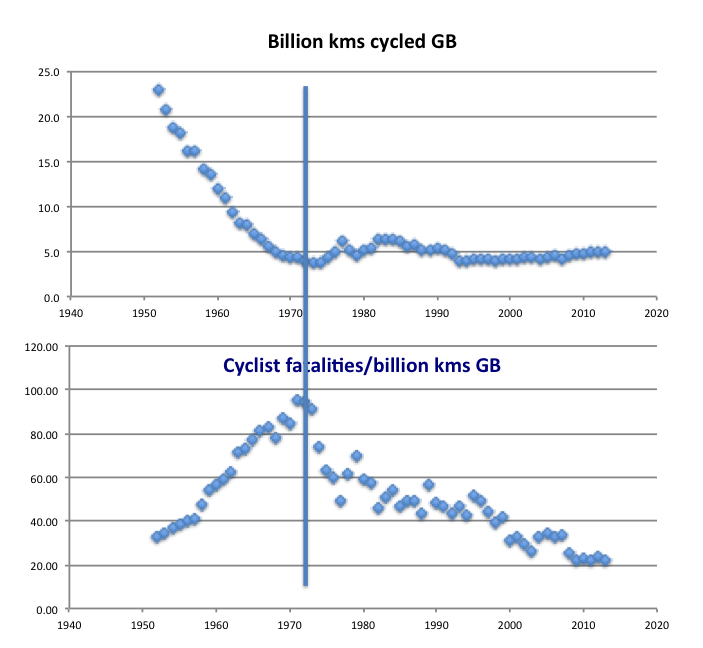Last March I took part in a conference devoted to the promotion of cycling in Madrid. My presentation, in essay form, has now been published by World Transport: Policy and Practice. Herewith the abstract
This essay is a response to an invitation to provide an overview of the current state of cycling in Britain, and more specifically London, for a conference in Madrid a city, like London, striving to promote more cycling. The essay focuses on the importance of both the volume of motorised traffic and perceptions of safety as determinants, over time, of the volume of cycling. It notes the dramatic decline (over 95%) since 1950 in the road accident fatality rate in Britain as cyclists, pedestrians and motorists competed for the right to the use of limited road space and how, in selected areas of London, cyclists are in the process of regaining their right to the road.
And here is Figure 7 from the essay:
From 1950 to 1973 (the year of the energy crisis) the number of kilometres cycled in Britain plummeted by about 80%. Over the same period the fatal risk of cycling, per kilometre, increased dramatically. The enormous increase in motoring was, physically, driving cyclists off the road. This displacement was officially sanctioned by what became known as the predict and provide policy underpinning transport planning. Forecasters were employed to predict future levels of car ownership and car use, and official policy was to provide sufficient road space to accommodate the forecasts. At public inquiries into road-building plans the problems of cyclists and pedestrians did not feature.
Their problems are only now beginning to be acknowledged as issues deserving of consideration alongside those of motorists stuck in traffic jams. Change does appear to be taking root in peoples minds.
The published paper can be found here (starting on page 10) –

